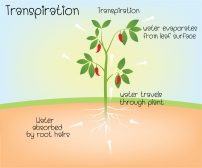Lotus
1. (Science: botany) a name of several kinds of water lilies; as Nelumbium speciosum, used in religious ceremonies, anciently in egypt, and to this day in Asia; Nelumbium luteum, the American lotus; and nymphaea lotus and N. Caerulea, the respectively white-flowered and blue-flowered lotus of modern egypt, which, with Nelumbium speciosum, are figured on its ancient monuments. The lotus of the lotuseaters, probably a tree found in northern Africa, Sicily, Portugal, and Spain (Zizyphus lotus), the fruit of which is mildly sweet. It was fabled by the ancients to make strangers who ate of it forget their native country, or lose all desire to return to it.
The lote, or nettle tree. See lote.
a genus (lotus) of leguminous plants much resembling clover.
alternative forms: lotos European lotus, a small tree (Diospyros lotus) of southern Europe and Asia; also, its rather large bluish black berry, which is called also the date plum.
2. An ornament much used in egyptian architecture, generally asserted to have been suggested by the egyptian water lily.
Origin: L. Lotus, gr. Cf. Lote.
Dictionary > Lotus
You will also like...

Abiotic and Biotic Factors
This tutorial deals with the abiotic factors of the freshwater environment that determine what sort of life would be sui..

Plant Tissues
Plant organs are comprised of tissues working together for a common function. The different types of plant tissues are m..

Cell Structure
A typical eukaryotic cell is comprised of cytoplasm with different organelles, such as nucleus, endoplasmic reticulum, G..

Water in Plants
The movement of molecules (specifically, water and solutes) is vital to the understanding of plant processes. This tuto..

Circulation
The circulatory system is key to the transport of vital biomolecules and nutrients throughout the body. Learn about the ..

IQ, Creativity and Learning
Human intelligence provided the means to utilize abstract ideas and implement reasoning. This tutorial takes a further l..

